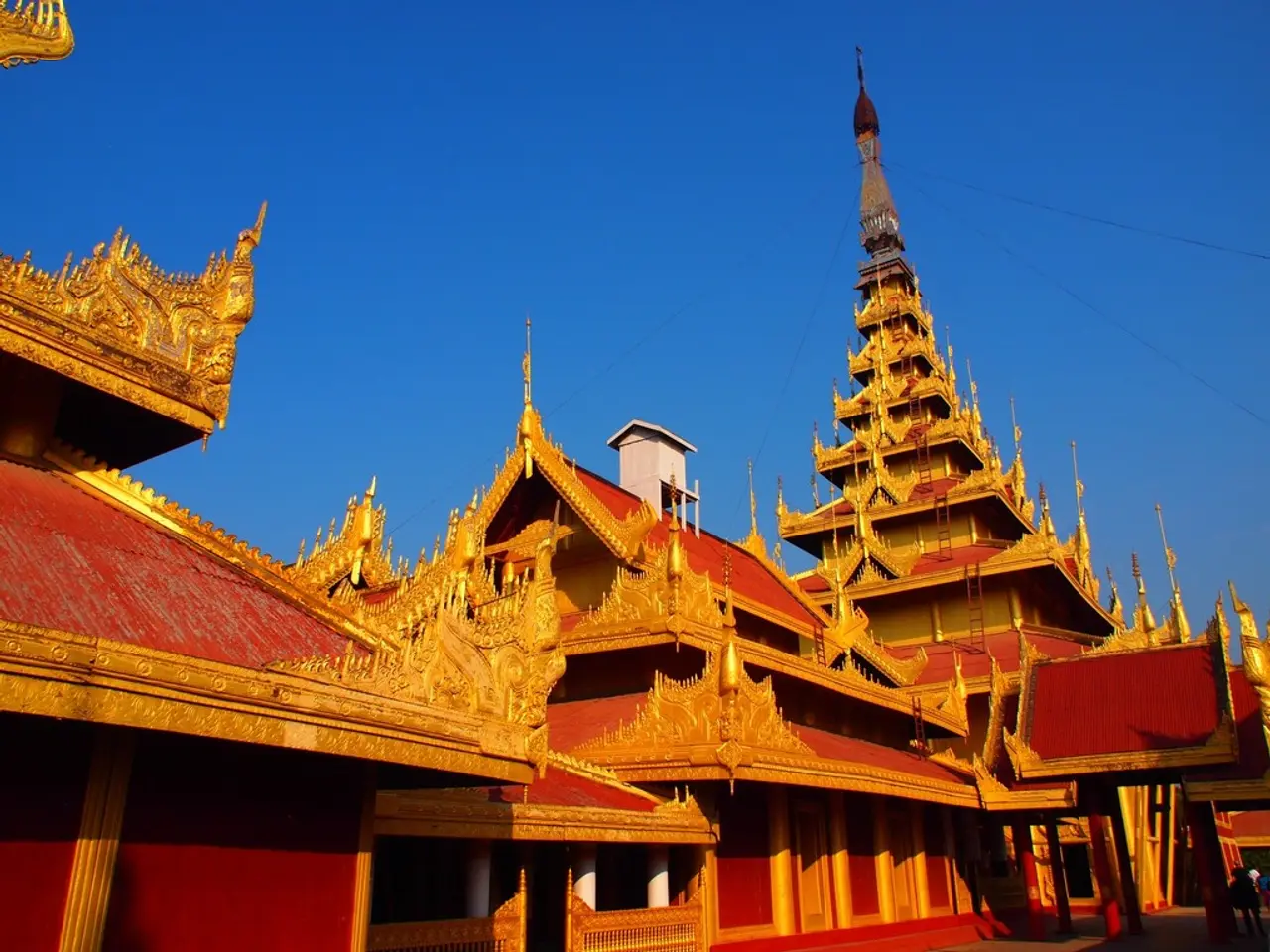Gold mining boom in Myanmar poses a risk to global waterways
In the gold-rich war zones of Myanmar, particularly along the porous border with China, satellite photos reveal a concerning reality - gold mines in Loi Kham and across eastern Shan state lack basic tailings infrastructure. This has led to unregulated and intensive extraction, turning Loi Kham into a hub of gold mining activities.
Mining companies, both local and Chinese-owned, operate in the Loi Kham mountain regions of eastern Shan State. However, the specific company names are often not openly disclosed due to the area's complex political and economic situation.
One of the most troubling aspects of these mining operations is the use of cyanide compounds for gold mining, a process known as gold cyanidation. This practice, popular due to its relatively low cost, especially in unregulated and illegal operations, has raised concerns about cyanide contamination.
The Mekong River Commission (MRC) had no response to these concerns about cyanide contamination that were raised at workshops. Busadee Santipitaks, the new CEO of the MRC Secretariat, pledged to strengthen river monitoring in response to complex water dynamics, but had no comment on cyanide contamination from gold mining in the Mekong Basin.
Protests against these mines were common in Mong Len until a protester was fatally shot in 2015, after which open resistance disappeared. Fear silences many living near the mines in Mong Len and Mong Kan.
Toxic runoff from gold mining operations in eastern Shan state may be contaminating water sources that extend far beyond Myanmar's borders. The Sai and Mekong rivers, which are international rivers, are affected by this toxic runoff. A study found trace amounts of gold in soil samples from Mong Len near the Loi Kham mining area.
In Mong Len alone, satellite imagery shows at least 10 gold mines sitting above Mekong tributaries. The pond in Mong Len, fed by Nam Kham, a stream that flows down from Loi Kham, is a potential source of contamination.
Myanmar was delisted by the Extractive Industries Transparency Initiative (EITI) in February 2024 due to failure to uphold basic governance practices. The lack of regulation in the mining industry has allowed these practices to continue unchecked.
China sees overseas gold mining as a strategic investment to secure domestic supply and leverage geopolitical influence through its Belt and Road Initiative (BRI). This investment in Myanmar's gold mines could have far-reaching environmental and health implications.
As concerns about the environmental impact of gold mining in eastern Shan state continue to grow, it is crucial that appropriate regulations are put in place to protect the region's people and environment. The silence from authorities on this issue is concerning and requires urgent attention.
Read also:
- Understanding Hemorrhagic Gastroenteritis: Key Facts
- Stopping Osteoporosis Treatment: Timeline Considerations
- Tobacco industry's suggested changes on a legislative modification are disregarded by health journalists
- Expanded Community Health Involvement by CK Birla Hospitals, Jaipur, Maintained Through Consistent Outreach Programs Across Rajasthan








